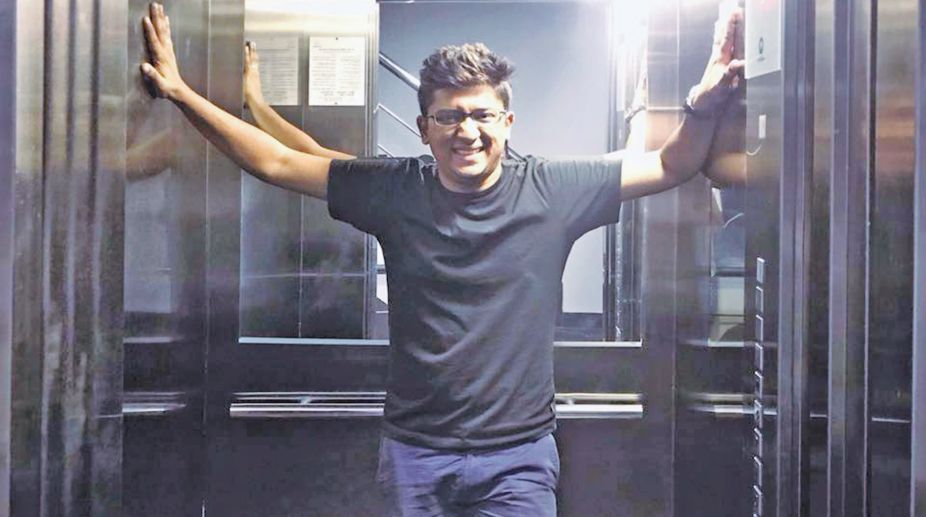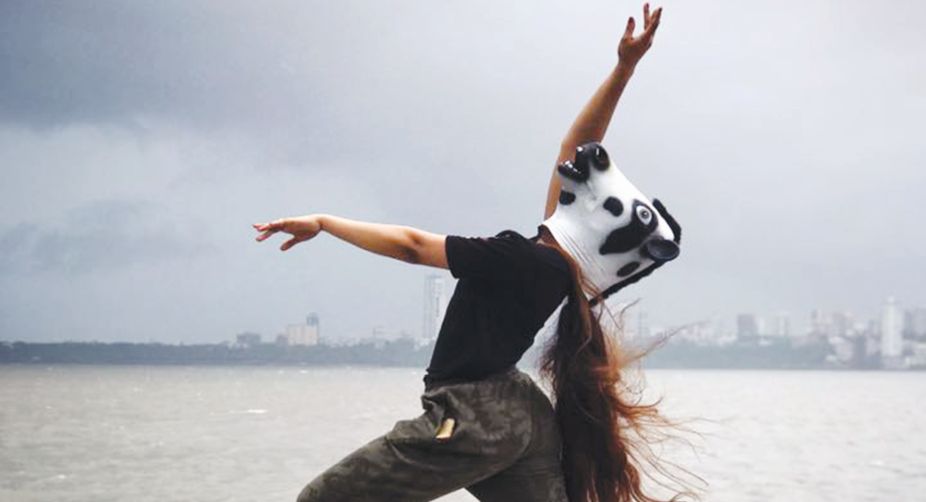Elaborate security for second phase polls in eight UP seats tomorrow
The seats going to polls are: Amroha, Meerut, Baghpat, Ghaziabad, Gautam Buddha Nagar, Bulandshahr (SC), Aligarh and Mathura.
Independent artist Sujatro Ghosh shared about his well-recognised ‘The Cow-mask Project’ campaign at The Bridge 2018

Sujatro Ghosh
Extraordinary women and men of influence challenged the established norms around gender representation in politics, workplace, religion, sexuality and love many a times, through various mediums and platforms.
But, the way the 24-year-old independent artist and Kolkata boy Sujatro Ghosh had took things that matters into his own wit to address the issue of safety of women is somewhat different.
At a recent day-long festival of ideas and conversations on gender empowerment in India that witnessed over 40 prominent speakers from politics, theater, arts and entertainment to converse on some of the most pressing issues that women face in India and offered insights on how women and girls are changing the world.
Advertisement
Ghosh shared more about him and his well-recognised “The Cow-mask Project” campaign. A Jamia Millia Islamia alumnus, he started his photo series with a picture in front of the iconic India Gate. Excerpts:

Q Tell us how and why the idea of “The Cow Mask Project”, and, why Delhi to start with?
I chose Delhi for the first photograph because the city was the hub of the debate. But soon I realised that it is more of a private issue for every woman. I have started photographing them in their private space as well, later.
I have been working with women rights and several civil society organisations for quite some years now. My sensitivity towards this issue which, therefore, is not recent, gave birth to the “The Cow Mask Project”, specifically started after the rise of the right wing in India.
The concept behind this is to visually illustrate the dichotomy behind our misplaced priorities where the chances of delivering (almost immediate) justice to a cow who is harmed is higher by several degrees than to a woman who has been raped, or molested, harmed or been subjected to domestic violence.
The idea has been to create awareness through photographing women in public and private spaces wearing the mask of a cow, thereby raising a quite literal question, “Do women really require to be cows in order to feel safe in this country?”
The context in which the cow mask has been set is in tune with the current socio-political scenario in India, but my fight against the patriarchal society has been for long and the project definitely speaks for women worldwide and not just India. And, that’s evident now with the exposure and acceptability of this project globally.
Q Your project was born with the purpose of raising public awareness about an important theme. Do you believe your photography can be a tool of protest, or, it’s in actual?
Art as a tool of change is quite powerful and I have been a witness to seeing the impact of my project first hand. So, yes, I do believe photography can be an effective means to address issues.
I believe it plays a big role in forming opinions, educating us about truth and transforming mindsets. When art reflects the times we live in, bringing about such positive changes in people through art is definitely possible.

Q What does it mean to be born woman in India today?
Honestly, I believe I am in no position to answer this question. Being a man, I cannot for one moment, pretend to completely understand the struggles a woman goes through in today’s world, not just in India. Inequality towards women all over the world is present in almost every sphere of daily life.
From inequity in wages, to something as basic as their lack of inclusivity in decision making processes at work, at home, and almost everywhere.
Even representations in public offices and the Parliaments reflect major inequity between the two sexes. A standard example would be how America has not had a single woman President till date.
Q Don’t you think that the issue of Indian women’s rights is a matter that should affect women of all nationalities, religions and skin colour?
The contexts in which Indian women’s rights or feminist movements are set are completely different to that of their counterparts in the West or to any other country for that matter.
I do not see how it may be possible to universalise feminist struggles when the struggles for certain women’s rights are set in contexts specific to practices of particular nations. Fighting against patriarchy and its ill-effects may therefore be the larger universal struggle uniting feminists over the world.
Q When and how did you perceive this “disparity” between woman and cow for the first time?
In India cow is considered as a sacred animal according to Hinduism and there are cow vigilantes who looks after the security of the cows. On the other hand there are reported rapes against women every 15 minutes in India, it made me think about the security of women in the country (pretty much a global problem). That is when I started off the project and I drew a line between both the issues.
Q What do you think are the cultural, political and religious reasons that, in some cases, determine the woman’s inadequate consideration in India?
The cultural, the religious and the political are often a steady mix, often flowing in and out of one another. Each one in turn affects the other two. Many social problems often stem from cultural practices due to their lack of choice to join the public workforce.
If in one religion, women were idolised giving them the status of God, leading to the need to protect their Gods and therefore confined them to the domestic realms, then in some other, it directly talked of how it’s the “duty” of the woman to serve the husband at all times. Such beliefs eventually led to political issues where women weren’t adequately represented in public offices and in the Parliaments.

Q Is there a link between the subjects photographed and the places where you take the pictures?
Yes, there is a link between the subjects and the locations we choose to photograph. When I started photographing the women, I captured them according to the places where they wanted to get clicked. Those were usually the places where they felt unsafe and where they faced daily incidents.
Q The Indian Parliament would like to introduce the death penalty for those who torture animals. I guess, however, there are also political groups that propose more justice for raped women. Is that so?
Bills (The Cow Protection Bill, 2017 by Subhramaniam Swamy) have been passed which talk of providing death penalty for those who slaughter cows. In my opinion, while I find this outrageous, I don’t believe capital punishment can be the solution to any crime committed, be it against any living being.
After all, how many will you kill? We need to work on mindsets and the mentality of the people to bring about any change. I’m also not aware of any political group which has proposed more justice for women against whom violence has been committed.
Q What are the reactions of people facing your project in India?
The project has already gained its initial momentum and has managed to effectively challenge the status quo of the current socio-political situation in the country.
Students, youngsters, women who have dealt with violence and rape, the concerned elderly, civil society, organisations working for women trafficking have expressed their sentiments and support for this cause.
At the same time, political and religious extremists and fundamentalists have been upset over their beliefs being threatened through art. Responses from across the globe, both positive and negative, have managed to fuel the need to continue with the endeavour and create significant impact in the lives of the people.

Q How do you want to go ahead with the project?
The overwhelming responses and feedback gave birth to the need to expand the project in various other locations across the country.
The idea behind this second phase of “The Cow Mask Project” is to generate an active discourse across various sections of the masses, of the need to deliver justice to women and ensure safety and security in all spaces through powerful imaging and photography.
It is also important that what began as a personal venture to become a full-fledged people’s project through women’s participation and collaboration.
Therefore, written documentation of the entire journey is a major component of the second phase. It will seek to give voices to the oppressed and the marginalised, to narrate stories of those who have been delayed justice through the magnetic interplay of words and images.
From the tribal woman to the adolescent slum dweller in a metropolitan, from a small town homemaker to the urban businesswoman, each and every voice is of vital importance and needs to be expressed, heard, documented and studied.
Advertisement